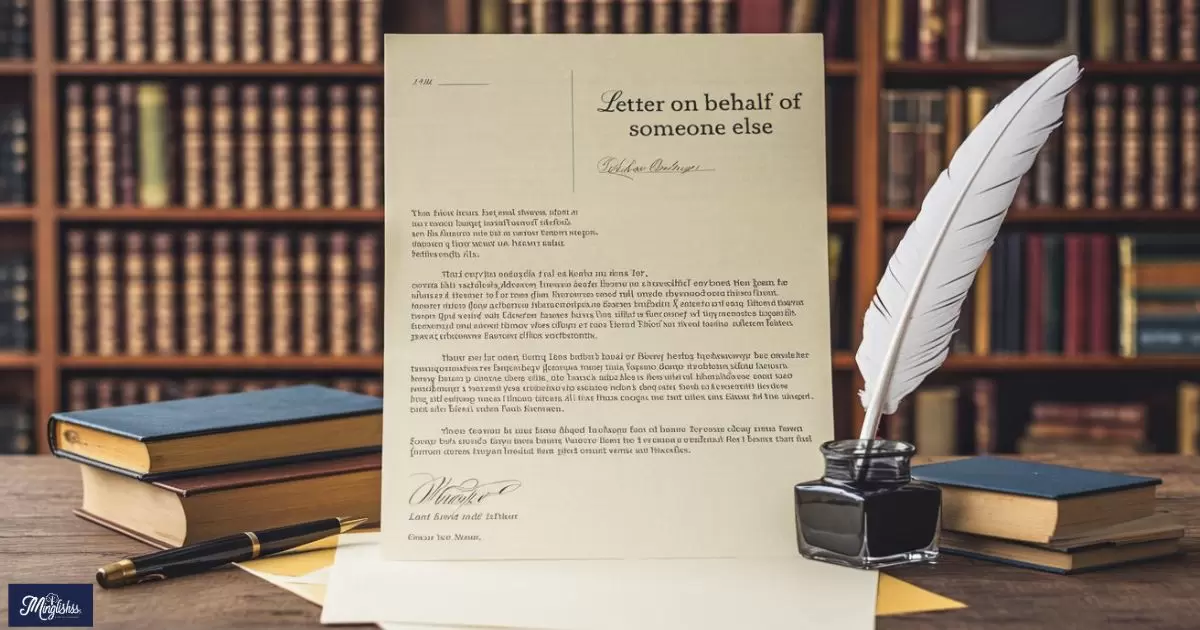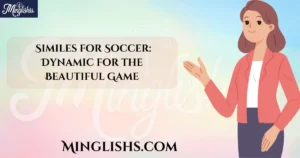“Master the art of signing letters on behalf of others with these professional approaches.”
Signing a letter on behalf of someone else requires both tact and professionalism. Whether you’re acting as an assistant, a representative, or a proxy, how you sign off on a letter reflects your respect for the original signer and maintains the integrity of the communication. Choosing the appropriate method for signing on someone else’s behalf ensures clarity and respects the formalities of professional correspondence.
This blog explores the proper ways to sign a letter on behalf of another individual. We will delve into various methods, each suited to different scenarios, and provide guidance on maintaining professionalism while signing on someone else’s behalf. By understanding these practices, you can ensure that your communications are both accurate and respectful.
Effective letter signing on behalf of others is crucial for maintaining professionalism in various organizational and business contexts. This guide will help you navigate the nuances of signing letters, ensuring that your approach aligns with established protocols and conveys the intended message clearly.
List of Proper Ways to Sign a Letter on Behalf of Someone Else
1. “Sincerely” [Your Full Name]
Scenario: Susan, an executive assistant, signs a letter on behalf of her boss, John Doe.
Explanation: This is a straightforward and formal approach, where Susan signs her own name below “Sincerely” and indicates that the letter is on behalf of John Doe.
Additional Tip: Use this method when the letter is formal and the sender’s identity needs to be clear.
2. “Best Regards” [Your Full Name]
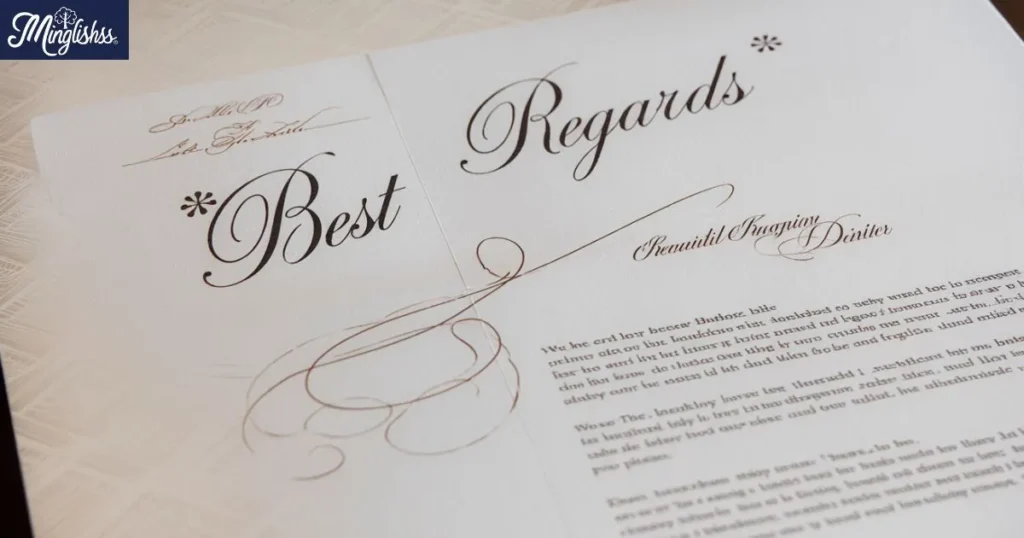
Scenario: Michael signs a business letter for his manager, Sarah Smith, using this sign-off.
Explanation: This polite and professional closing is suitable for less formal business communications, where Michael signs his own name and notes that it’s on behalf of Sarah Smith.
Additional Tip: Appropriate for business settings where a slightly less formal tone is acceptable.
3. “Yours Truly” [Your Full Name]
Scenario: Emma, a personal assistant, uses this sign-off for a letter sent on behalf of her boss, James Lee.
Explanation: A formal closing often used in business letters, where Emma signs her name and indicates that she is signing on James Lee’s behalf.
Additional Tip: Ideal for formal correspondence where respect and formality are paramount.
4. “Respectfully” [Your Full Name]
Scenario: Oliver signs a formal letter for his department head, Linda Evans, with this closing.
Explanation: This sign-off conveys a high level of respect and formality, suitable for sensitive or highly professional communications.
Additional Tip: Use when the letter deals with formal or delicate matters that require an extra touch of respect.
5. “Kind Regards” [Your Full Name]
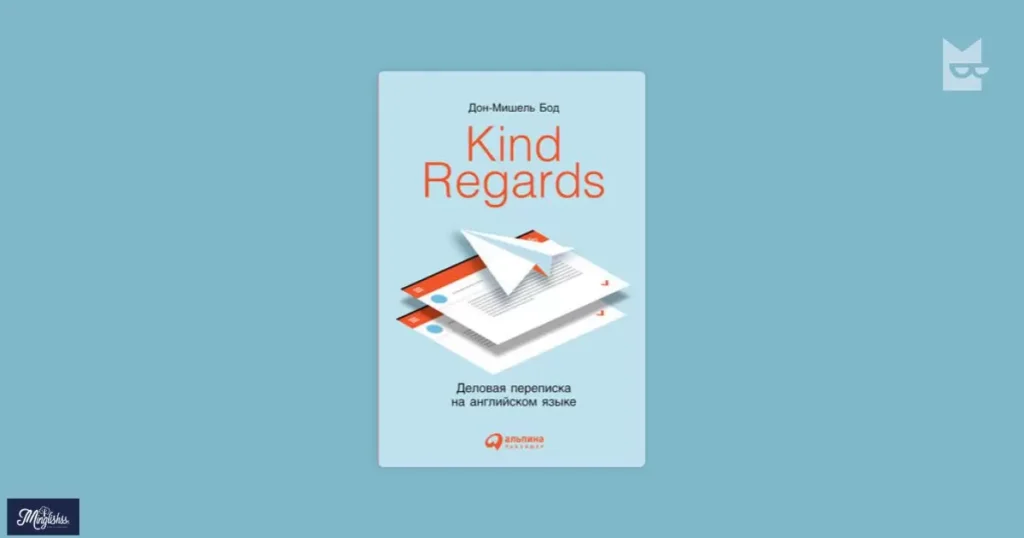
Scenario: Chloe signs a follow-up letter on behalf of her colleague, Robert Green.
Explanation: This slightly informal but still professional closing works well for friendly business correspondence.
Additional Tip: Suitable for internal communications or when a more personable tone is acceptable.
6. “With Best Wishes” [Your Full Name]
Scenario: Daniel signs a letter on behalf of his supervisor, Mary Johnson, for a congratulatory message.
Explanation: This warm and positive closing is used for letters that convey best wishes or congratulations.
Additional Tip: Ideal for letters where a more personal touch is appropriate.
7. “Warm Regards” [Your Full Name]
Scenario: Sophia signs a letter for her manager, David King, thanking a client.
Explanation: This sign-off adds a touch of warmth and friendliness while remaining professional.
Additional Tip: Appropriate for client communications where maintaining a warm relationship is beneficial.
8. “Cordially” [Your Full Name]
Scenario: James uses this sign-off for a formal invitation letter on behalf of his company’s president, Karen Brown.
Explanation: A formal and cordial closing that is often used in professional invitations and formal correspondence.
Additional Tip: Best for formal invitations or communications where a high level of courtesy is needed.
9. “Yours Faithfully” [Your Full Name]
Scenario: Alice signs a letter of recommendation on behalf of her manager, Robert White.
Explanation: This traditional closing is used for formal letters, particularly in professional recommendations and applications.
Additional Tip: Suitable for formal recommendations and applications where traditional formality is required.
Professional Ways to Say “Sorry to Bother You”
10. “With Appreciation” [Your Full Name]
Scenario: Ethan uses this sign-off in a thank-you letter written on behalf of his director, Rachel Adams.
Explanation: This closing expresses gratitude and is appropriate for letters thanking someone for their efforts or contributions.
Additional Tip: Ideal for thank-you notes or letters expressing appreciation.
11. “Thank You” [Your Full Name]
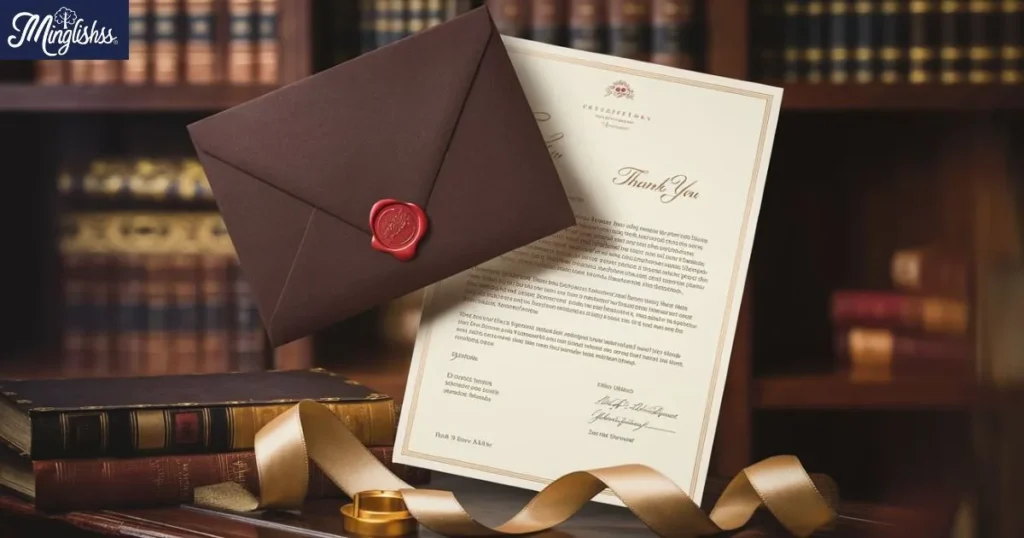
Scenario: Olivia signs a brief thank-you letter on behalf of her supervisor, Mark Robinson.
Explanation: A simple and effective way to convey gratitude while signing on someone else’s behalf.
Additional Tip: Suitable for straightforward thank-you letters where brevity is key.
12. “Sincerely Yours” [Your Full Name]
Scenario: Lucas uses this closing for a formal business letter sent on behalf of his executive, Jennifer Scott.
Explanation: A formal and respectful sign-off used in professional correspondence.
Additional Tip: Best for formal business communications where a traditional closing is appropriate.
13. “Best” [Your Full Name]
Scenario: Mia signs a business letter on behalf of her colleague, Brian Foster, using this informal yet professional closing.
Explanation: A slightly informal yet professional sign-off suitable for business correspondence.
Additional Tip: Ideal for less formal business communications where a casual tone is acceptable.
14. “Thank You for Your Attention” [Your Full Name]
Scenario: Nathan signs a formal letter on behalf of his department head, Emily Parker, requesting prompt action.
Explanation: This closing expresses appreciation for the recipient’s attention and is used in formal requests.
Additional Tip: Effective for letters that require the recipient’s prompt attention and action.
15. “With Regards” [Your Full Name]
Scenario: Isabella uses this sign-off in a professional letter on behalf of her manager, Paul Wright.
Explanation: A formal and respectful sign-off suitable for various business communications.
Additional Tip: Suitable for general professional correspondence where formality and respect are required.
16. “In Appreciation” [Your Full Name]
Scenario: Oliver signs a letter of thanks on behalf of his senior executive, Patricia Wilson.
Explanation: This closing conveys gratitude and appreciation, appropriate for thank-you letters.
Additional Tip: Ideal for letters expressing sincere thanks or appreciation.
17. “All the Best” [Your Full Name]

Scenario: Chloe uses this closing in a less formal letter on behalf of her team leader, Kevin Adams.
Explanation: A friendly and less formal closing suitable for internal communications or less formal external correspondence.
Additional Tip: Best for internal communications or when a more relaxed tone is acceptable.
18. “Regards” [Your Full Name]
Scenario: Daniel signs a follow-up letter on behalf of his supervisor, Laura Carter.
Explanation: A neutral and professional closing that works well in various business contexts.
Additional Tip: Suitable for general business correspondence where a professional tone is needed.
19. “Yours Truly” [Your Full Name]
Scenario: Rebecca signs a formal business letter on behalf of her manager, Steven Brown.
Explanation: A formal and traditional sign-off used for professional correspondence.
Additional Tip: Ideal for formal communications where a traditional closing is preferred.
20. “With Respect” [Your Full Name]

Scenario: Emily uses this sign-off in a formal letter addressing a sensitive issue on behalf of her director, Thomas Green.
Explanation: This closing conveys a high level of respect and formality.
Additional Tip: Suitable for sensitive or formal matters where respect and formality are crucial.
21. “Yours Sincerely” [Your Full Name]

Scenario: Michael uses this formal closing in a letter of recommendation on behalf of his boss, Angela Roberts.
Explanation: A traditional and formal closing used for various types of professional correspondence.
Additional Tip: Ideal for formal letters where a traditional and respectful closing is necessary.
22. “Sincerely Yours” [Your Full Name]
Scenario: Laura signs a formal business proposal on behalf of her CEO, Brian White.
Explanation: A formal and respectful sign-off suitable for various professional documents.
Additional Tip: Effective for formal proposals and communications where respect and professionalism are essential.
23. “Cordially Yours” [Your Full Name]
Scenario: James uses this sign-off in a formal invitation letter on behalf of his company’s president, Sarah Lee.
Explanation: A formal and courteous closing used for professional invitations and formal correspondence.
Additional Tip: Best for invitations or formal events where a high level of courtesy is required.
24. “With Best Regards” [Your Full Name]
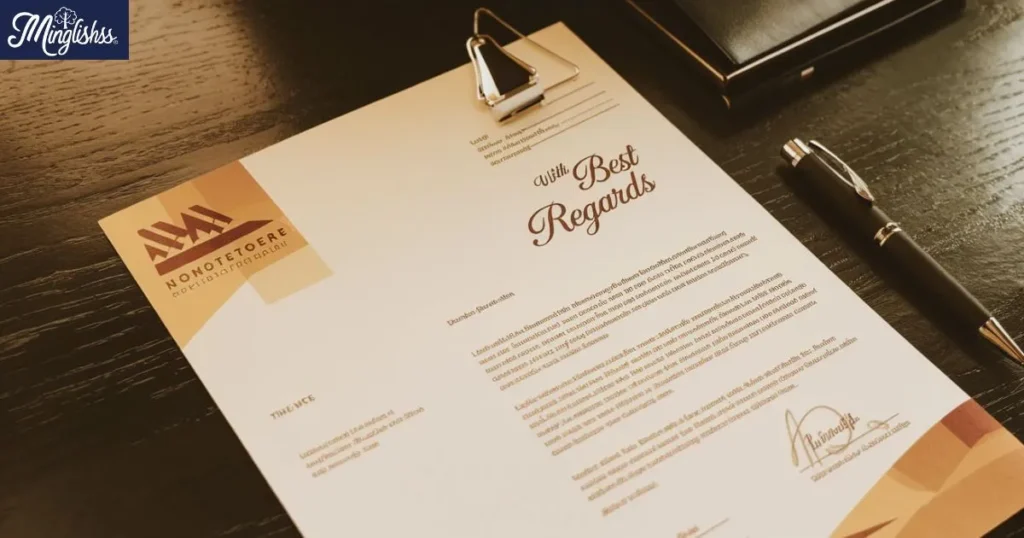
Scenario: Olivia signs a client follow-up letter on behalf of her senior executive, Michael Carter.
Explanation: This closing conveys a warm yet professional tone, suitable for client communications.
Additional Tip: Suitable for maintaining a positive and professional relationship with clients.
25. “Warmest Regards” [Your Full Name]
Scenario: Ethan uses this sign-off in a formal letter on behalf of his director, Linda Smith, to offer congratulations.
Explanation: A warm and respectful closing that balances professionalism with a personal touch.
Additional Tip: Ideal for congratulatory messages or letters where a warm tone is appropriate.
26. Sincerely on Behalf Of
Scenario:
Jane is a personal assistant to Mark, the CEO of a company. Mark is unable to respond to an important client letter due to a scheduling conflict. Jane drafts and signs the letter on his behalf.
Explanation:
When signing a letter on behalf of someone else, write the name of the person for whom you are signing and precede it with “Sincerely, on behalf of.” Then, add your own name and title below. This indicates that you are communicating in an official capacity and not personally. For example:
Sincerely,
On behalf of Mark Johnson, CEO
Jane Smith
Personal Assistant
This method maintains professionalism while clarifying the authority of the signature.
Additional Tip:
Always ensure that the person you are signing on behalf of has authorized you to do so. If possible, attach or include a note indicating their consent to avoid misunderstandings.
27. How to Sign for Someone Else in a Letter
Scenario:
David, the HR Manager, is signing a letter on behalf of Sarah, the Director of Human Resources, who is out of the office but has approved the letter’s content.
Explanation:
To sign for someone else, use the abbreviation “p.p.” (per procurationem), which means “on behalf of,” before your signature. Write the name of the person you are signing for, then sign your name underneath. For example:
Sarah Williams
Director of Human Resources
p.p. David Green
HR Manager
This format ensures clarity about the roles and responsibilities of both parties involved.
Additional Tip:
Include the reason for signing on behalf of the individual if appropriate (e.g., “Ms. Williams is out of the office but has authorized this communication”). This adds transparency and builds trust with the recipient.
28. Kind Regards on Behalf Of
Scenario:
Emily, the assistant manager of a sales department, needs to send a thank-you letter to a client on behalf of her manager, Robert, who is traveling overseas.
Explanation:
When using “Kind Regards” on behalf of someone else, the letter should clearly indicate the relationship and authorization. Write the closing “Kind Regards,” followed by “on behalf of,” the name and title of the person you are representing, and your name below. For example:
Kind Regards,
On behalf of Robert Taylor, Sales Manager
Emily Carter
Assistant Sales Manager
This format makes it clear that the letter is sent under the direction of the primary person and maintains professionalism.
Additional Tip:
Use this format when addressing formal or semi-formal correspondence. Double-check the tone and ensure the message aligns with the voice of the person you are representing. Keep a record of the communication for accountability.
29. Best Regards on Behalf Of
Scenario:
Alex, an executive assistant, is tasked with responding to a vendor’s inquiry on behalf of his supervisor, Linda, the Head of Procurement, who is attending an all-day conference.
Explanation:
When using “Best Regards” on behalf of someone else, it’s essential to clarify the representation. After the closing phrase “Best Regards,” include “on behalf of,” the person’s name and title you represent, and then your own name and title. For example:
Best Regards,
On behalf of Linda Gray, Head of Procurement
Alex Wright
Executive Assistant
This approach ensures transparency and professionalism, reassuring the recipient about the authority of the correspondence.
Additional Tip:
If the communication is critical, confirm the content with the individual you are representing before sending the letter. Doing so minimizes errors and upholds their standards of communication.
Pros and Cons of Signing a Letter on Behalf of Someone Else
| Pros | Cons |
| Clarity: Indicates clearly who the letter is from and who is authorizing it. | Misunderstanding: May lead to confusion if not done properly, especially if the original signer’s authority is not clear. |
| Professionalism: Maintains formality and professionalism in business communications. | Perceived Insincerity: Some recipients might perceive the communication as less personal or sincere. |
| Efficiency: Allows assistants or representatives to manage correspondence on behalf of busy executives or managers. | Responsibility: Places responsibility on the signer to accurately represent the views and authority of the original signer. |
| Consistency: Ensures consistent communication style and tone across different correspondences. | Legal Concerns: Potential legal issues if the signing is not authorized or handled correctly. |
| Time Management: Helps manage time effectively by delegating signing tasks. | Authority Issues: May cause issues if the recipient questions the authority of the person signing on behalf of someone else. |
Conclusion
Signing a letter on behalf of someone else is a common practice in professional settings that helps maintain clarity, professionalism, and efficiency. However, it requires careful attention to ensure that the communication is perceived as sincere and that the authority of the original signer is properly represented.
By following proper protocols and choosing appropriate sign-offs, you can ensure that your correspondence reflects both professionalism and respect.
Answer to key Question
Q1: Can I use any sign-off when signing on behalf of someone else?
No, it’s important to choose a sign-off that suits the formality and context of the letter while maintaining professionalism.
Q2: How should I indicate that I am signing on behalf of someone else?
Typically, you should sign your own name followed by “on behalf of [Original Signer’s Name]” or a similar notation.
Q3: Is it necessary to have written authorization to sign on someone else’s behalf?
Yes, having written authorization ensures that you are legally permitted to sign on behalf of someone else.
Q4: Can I use informal sign-offs when signing on behalf of someone else?
It depends on the context. Formal sign-offs are generally preferred for professional communication, but some informal sign-offs may be appropriate in less formal contexts.
Q5: What should I do if the recipient questions my authority to sign on behalf of someone else?
Provide any necessary documentation or authorization that confirms your role and authority to sign on behalf of the original signer.

Hi, I’m Isabel: I’m passionate about turning language learning into a fun adventure. I believe in making every word exciting and memorable.
